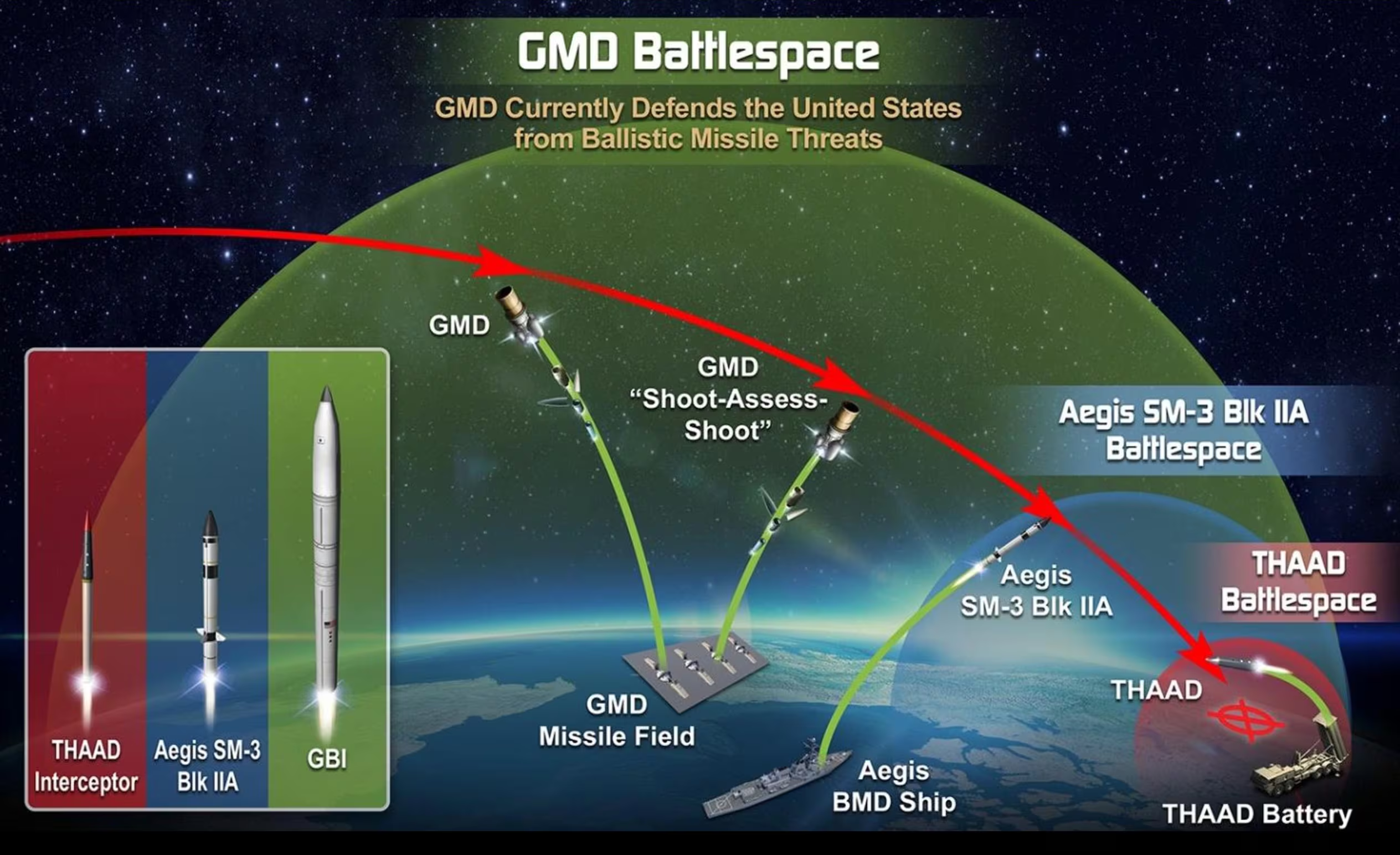The United States this week successfully demonstrated an ability to destroy an intercontinental ballistic missile with a Standard Missile-3 Block IIA interceptor. This major development provides an important opportunity to improve layered missile defense for Americans and their allies.
According to the Missile Defense Agency, the “threat-representative” ICBM was launched from a test site in Kwajalein Atoll in the Marshall Islands toward a target near Hawaii. Simulating a “defense of Hawaii” scenario, the Navy destroyer John Finn, equipped with the Aegis ballistic missile defense system, successfully destroyed the missile using an SM-3 IIA interceptor.
Congress, cognizant of the increasing missile threat from North Korea, used the fiscal 2018 National Defense Authorization Act to require MDA to conduct a test by the end of 2020 in order to see if the U.S. could use the SM-3 IIA interceptor against an ICBM.
As it turns out, Congress was prescient.
While North Korea temporarily ceased flight tests of longer-range ballistic missiles, Pyongyang has continued to develop land- and sea-based missiles. North Korea recently paraded its newest and largest ICBM to date. While the regime has not yet flight-tested the missile, dubbed the Hwasong-16 by analysts, Pyongyang has, or is developing, at least four platforms — the KN-08, the KN-14, the Hwasong-14 and the Hwasong-15 — that qualify as ICBMs.
With the newly unveiled Hwasong-16, the North Korean arsenal now boasts five missiles with ICBM-class ranges. Pyongyang could potentially use some of those missiles to target the United States.
A similar threat grows in Iran, whose cooperation with North Korea in the missile domain has been identified and punished by the U.S. government.
This April, Iran’s Islamic Revolutionary Guard Corps’ Aerospace Force — the entity with operational control over the country’s ballistic missile arsenal — tested its first-ever military satellite on a space-launch vehicle featuring a solid-propellant second-stage motor.
Iran currently has no ICBMs and is subject to a self-imposed range cap of 2,000 kilometers on its missiles. But as Iranian officials have boasted, that ban can be unilaterally ended. Already Tehran hosts the largest arsenal of short-and medium-range ballistic missiles in the Middle East. According to the 2019 Missile Defense Review, Iran’s “desire to have a strategic counter to the United States could drive it to field an ICBM, and progress in its space program could shorten the pathway to an ICBM.”
The SM-3 IIA interceptor was originally designed to counter medium- or intermediate-range missiles. But this week’s successful test suggests that the MDA could use the interceptor to strengthen American layered missile defenses against a rogue state’s ICBM.
The first layer of America’s existing homeland defense includes the Ground-based Midcourse Defense system, which features 44 Ground-Based Interceptors in California and Alaska designed to destroy ICBMs in their midcourse phase. The Terminal High Altitude Area Defense system uses a powerful radar to track ballistic missiles and destroy them just before they reach friendly targets.
The SM-3 IIA interceptor positioned on a destroyer or on land using the Aegis Ashore system could now provide another chance for the United States to destroy an incoming ICBM, as this Department of Defense graphic depicts:

Adding additional missile protection for Americans is commonsense, but some worry that deployment of this additional missile defense capability against ICBMs could destabilize relations with Russia and China.
But such an argument is dubious. The U.S. homeland missile defense system is designed to counter a relatively modest attack from North Korea and perhaps Iran. Even with the welcome potential improvements associated with the SM-3 IIA interceptor, the U.S. missile defense system will remain thoroughly inadequate against a major missile attack from Russia or China.
The scale and sophistication of such an attack by either country would easily overwhelm the U.S. missile defense system. That is especially true given the hypersonic and cruise missile capabilities that both countries possess or are developing.
Instead, the United States relies on its nuclear triad to deter such an attack from Russia or China.
Russia and China know that America’s existing missile defenses and any improvement that might be possible in the coming years using the SM-3 IIA could not defeat a major missile attack. But that fact will not likely prevent either great power competitor from issuing cynical and overwrought protests — even as they rush to expand their own missile defenses.
It is worth noting that Russia has more deployed homeland missile defense interceptors than the United States.
Congress should be lauded for its prescience in the 2018 NDAA regarding the potential capability of the SM-3 IIA against ICBMs. Following the successful test this week, Congress should now act to ensure associated missile defense programs are sufficiently funded.
This opportunity to better protect Americans should not be missed.
Bradley Bowman is senior director of the Center on Military and Political Power at the Foundation for Defense of Democracies, where Behnam Ben Taleblu is a senior fellow.







